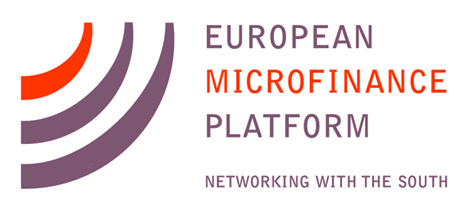On  the last day of European Microfinance Week, Katharine Pulvermacher of the Luxembourg-based Microinsurance Network led a discussion on insuring people with daily incomes of USD 2 to USD 20. Those with lower incomes, she argued, will have to be covered by government safety nets.
the last day of European Microfinance Week, Katharine Pulvermacher of the Luxembourg-based Microinsurance Network led a discussion on insuring people with daily incomes of USD 2 to USD 20. Those with lower incomes, she argued, will have to be covered by government safety nets.
Anup Singh of India-based consultancy MicroSave described the path to success in microinsurance as pursuing volume rather than competing on value. He sees a big opportunity in the sub-sector because only about 4 percent of the target income bracket is covered by insurance. In India, however, there has been a higher level of uptake. Mr Singh cited data indicating the rate of financial inclusion in India has risen from 35 percent in 2011 to 80 percent now. Roughly 270 million people in the country recently opened financial accounts for the first time, largely to access insurance. When the Indian government began opening accounts for people to use for receiving government benefits, it offered insurers the opportunity to participate (on an unsubsidized basis). Their offerings include life insurance policies that cost as little as USD 0.50 per year for coverage of USD 1,000.
Mr Singh argued that technology is key to achieving efficiency in distribution and other aspects of operations. This is how providers can reach large numbers of people, which is the only way to make microinsurance commercially viable. For traditional insurers, he argued that microinsurance must be a dedicated unit within the company, rather than a department within another division. Miguel Solana of the Impact Insurance Facility of the UN’s International Labour Organization discussed some the problems large insurers have had with microinsurance. Margins are thin, and operations often are subsidized by traditional insurance. These firms often have trouble managing partnerships with product distributors, such as mobile network operators, agricultural suppliers and department stores. Ms Pulvermacher said, “If you don’t have the sales incentives right for the brokers, nothing is going to happen.” Another challenge is staff training. For example, a microfinance institution (MFI) may have customers that want insurance, but it is expensive to train loan officers to understand the products well enough to sell them.
Anne Contreras of Luxembourgish legal and business services firm Arendt & Medernach named Switzerland-based impact investor BlueOrchard and LeapFrog Investments, a Mauritius-based microinsurance fund, as rare examples of large actors in the microinsurance space that are not actually insurers.
Jim Roth of LeapFrog argued that financing is not the primary challenge in growing microinsurance. He sees the insurance market in high-income countries – as well as among high-end clients in low-income countries – as saturated. This means the big growth potential in global insurance is microinsurance, serving the mass market in low- and middle-income countries. As an example, Mr Roth stated that UK-based insurer Prudential plc makes more money from its operations in Indonesia than it does in the UK. Among insurers, he said, “the willingness to put money behind [microinsurance] is solidly there.” Mr Solana added that, “It seems like the money is there, but we need to create the skill set to create products that meet the need on the ground.” One strategy of traditional insurers has been to invest in LeapFrog and then buy firms that the fund has had success in growing.
Regarding Africa, Mr Roth gave the example of US-based insurer Prudential investing USD 200 million in Ghana. On that continent, however, Ms Pulvermacher stated that the market is fragmented, with low penetration. She asked, “Why is it that so many MFIs [microfinance institutions] are not offering even basic insurance?” While in other parts of the world, many MFIs offer insurance that pays microborrowers’ debt in case of their death, Ms Pulvermacher exclaimed that in Africa, “MFIs aren’t even offering credit-life. It’s terrifying!”
Regarding investing in microinsurance, Mr Solana pointed out that while MFIs tend to need more debt investment, insurance requires more equity financing. He added that it is difficult to invest specifically in microinsurance via large insurers, so impact investors often are interested in the distributors. All of the panelists agreed that it is difficult to find distribution models that can be effective on a sustainable basis.
In closing, Mr Roth stated that, unlike the case with global lenders and microcredit, “The CEOs of very large insurers, which control massive amounts of capital, have microinsurance on their radar. This is reason for significant optimism.”
This sponsored feature is the last in a series on European Microfinance Week 2018, which was held from November 14 through 16 in Luxembourg by the European Microfinance Platform (e-MFP), a network of over 130 financial-inclusion stakeholders. MicroCapital has been engaged to promote and document the event.
Additional Resources
15k Refugees in Uganda Receive Assistance via AirTel Mobile Money, Cutting Delivery Costs by 47%, Boosting Speed by 42%, Reducing “Money Truck” Problems: UNCDF Reports at European Microfinance Week
https://www.microcapital.org/special-report-15k-refugees-in-uganda-receive-assistance-via-airtel-mobile-money-cutting-delivery-costs-by-47-boosting-speed-by-42-reducing-money-truck-problems-uncdf-reports-at/
Savings Groups Notch Higher Returns When Not Supported by NGOs; Bank Linkages Correlate with Lower Repayment, More Dropouts
https://www.microcapital.org/special-report-savings-groups-notch-higher-returns-when-not-supported-by-ngos-bank-linkages-correlate-with-lower-repayment-more-dropouts/
European Microfinance Week 2018
http://www.e-mfp.eu/european-microfinance-week-2018/information
MicroCapital Coverage of European Microfinance Week Since 2012
https://www.microcapital.org/category/european-microfinance-week/
Similar Posts:
- MICROCAPITAL BRIEF: AIA Commits $200m to LeapFrog Investments Seeking Positive Social, Environmental Impact
- SPECIAL REPORT: Enabling Microinsurance via Technology: RFID Tags Slash Fraud, Costs of Livestock Cover in Rwanda
- SPECIAL REPORT: Banco FIE of Bolivia Takes $100k “Financial Inclusion that Works for Women” European Microfinance Award 2022
- SPECIAL REPORT: Fintechs vs MFIs – a Debate at European Microfinance Week
- SPECIAL REPORT: Financial Inclusion for Women Requires Engaging All Levels of the Microfinance Institution
